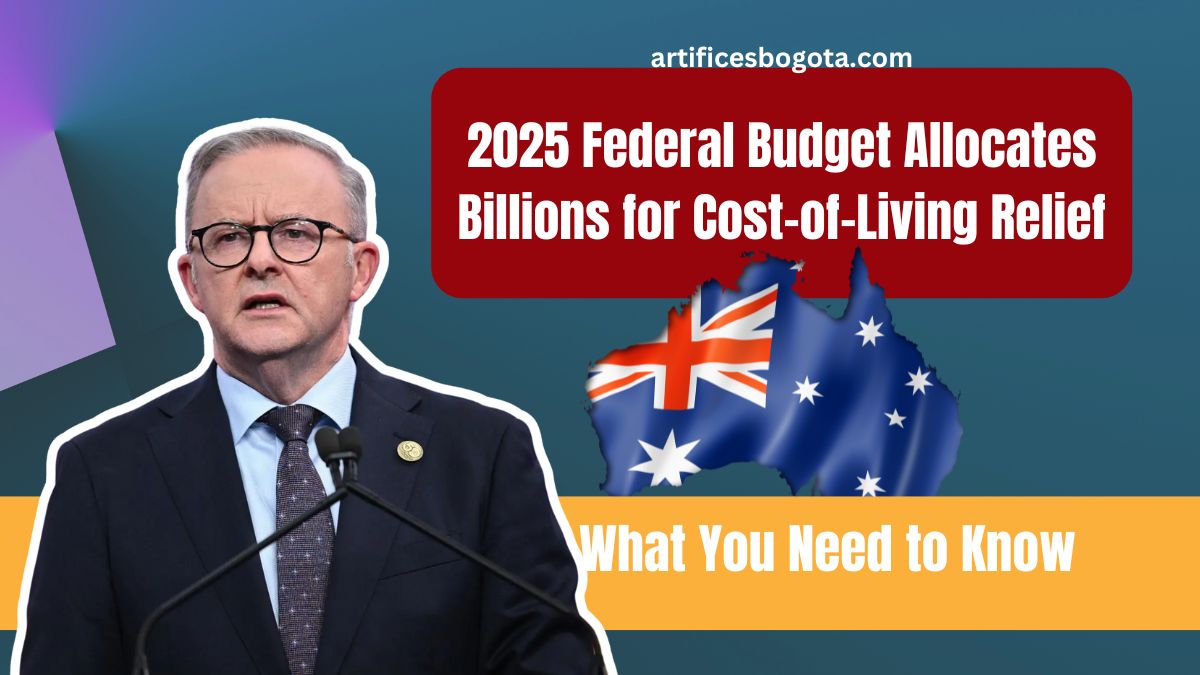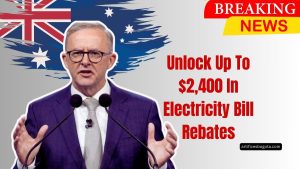The 2025 Federal Budget is a critical topic for many Australians, as Treasurer Jim Chalmers prepares to reveal his fourth budget. Amidst rising concerns about the cost of living, Chalmers has promised meaningful yet responsible relief measures.
As the Labor government prepares for the upcoming election, several important budget details have already been made public. Here’s a breakdown of what Australians can expect in the 2025 budget.
Key Relief Measures in the 2025 Federal Budget
1. Energy Bill Rebate Extension
The government has extended the $300 energy rebate for households and small businesses, initially set to expire on April 1.
Under the new $1.8 billion extension for 2025, additional quarterly rebates will continue until the end of the year, ensuring financial relief for Australian families and small businesses.
| Rebate Amount | Frequency | Total Extension |
|---|---|---|
| $75 | Quarterly | Two more installments |
2. Deeming Rates Frozen for Pensioners
For around 900,000 pensioners, deeming rates will remain frozen for another year. These rates influence the Centrelink payments, including pensions, and determine eligibility based on assets such as superannuation and bank balances. The freeze is a direct effort to assist pensioners by maintaining their financial stability.
3. Healthcare Initiatives: Reduced Costs for Medicines and GP Visits
The government is also addressing the rising healthcare costs through two major initiatives:
- Lower GP Visit Costs: The government’s $8.5 billion plan will reduce out-of-pocket expenses for general practitioner (GP) visits, aiming to make 90% of GP visits free by 2030. This initiative includes expanding the bulk-billing incentive, which currently helps vulnerable groups, such as pensioners and healthcare cardholders.
- Affordable Prescription Medicines: The $690 million plan will lower the cost of most medicines listed under the Pharmaceutical Benefits Scheme (PBS), reducing the price from $31.60 to $25. This could result in savings of up to $235 annually for individuals.
4. Subsidised Childcare for Families
The Labor government has proposed a $427 million subsidy over the next five years to provide three days a week of subsidised childcare for families earning less than $530,000 annually.
This policy aims to relieve some of the financial pressures on middle-income families, making childcare more affordable.
5. HECS Relief: Student Loan Debt Reduction
As part of efforts to ease financial burdens on students, the HECS-HELP debt for about three million Australians will be reduced by 20% starting June 1.
This $16 billion plan will offer a one-off discount for holders of student loans, alongside retroactive adjustments to minimize the impact of indexation. This move is expected to reduce the average debt by approximately $1,200.
6. Housing Support: Help to Buy Scheme Expansion
The Help to Buy scheme, which assists Australians in purchasing homes, will be expanded under the 2025 budget.
The scheme will now allow more eligible individuals to purchase a home with government support, with income limits increased to $100,000 for singles and $160,000 for couples. In major cities like Sydney, the property price cap will increase from $950,000 to $1.3 million.
7. Support for Apprentices and Tradespeople
The government has allocated $630 million to the Key Apprentice Program to support apprenticeships. Eligible tradespeople will receive $10,000 during their training, distributed in installments over their apprenticeship period.
8. Beer Price Freeze: Tax Pause
A major move in the 2025 budget is the pause on the twice-annual alcohol excise indexation, particularly for draught beer, lasting until 2027.
This will save taxpayers about $200 million in forgone revenue and is expected to benefit beer drinkers, brewers, and hospitality businesses alike.
Will the Budget Be in Deficit or Surplus?
Treasurer Jim Chalmers has confirmed that the 2025 federal budget will show a deficit, although it will be smaller than the deficits inherited from previous governments.
The government is forecasting a $26.9 billion deficit for the 2024-25 financial year, expected to increase to $46.9 billion in 2025-26. Despite this, Chalmers emphasized the responsible economic management that has characterized the government’s previous budgets.
Timeline: Budget Delivery and Election Date
The 2025 Federal Budget will be handed down on Tuesday night in Canberra, outlining the government’s funding measures for the next year. While the federal election has not yet been scheduled, it is expected to occur on or before May 17.
The 2025 Federal Budget offers a broad range of cost-of-living relief measures designed to alleviate the financial pressures felt by many Australians.
With initiatives aimed at lowering energy bills, reducing healthcare costs, easing housing access, and providing support for apprentices, this budget will have a significant impact on everyday Australians.
While the budget forecasts a deficit, the government’s approach is focused on responsible economic management, ensuring that the relief measures will be both impactful and sustainable.
FAQs
What is included in the 2025 energy rebate extension?
The $300 energy rebate will continue for households and small businesses through two additional quarterly installments, providing ongoing financial relief through 2025.
How will the childcare subsidy benefit families?
Under the new budget, families earning less than $530,000 annually will receive three days a week of subsidised childcare for a period of five years, easing the financial burden of childcare costs.
What are the plans for healthcare in the 2025 budget?
The government plans to make 90% of GP visits free by 2030 and lower the cost of medicines under the Pharmaceutical Benefits Scheme. These measures aim to reduce out-of-pocket healthcare expenses for Australians.
What changes are being made to the Help to Buy scheme?
The Help to Buy scheme will be expanded to allow higher income limits, and the property price cap will be increased in cities like Sydney, making it easier for more Australians to access the housing market.




